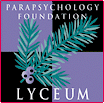 |
 |
| Etzel Cardeña  I was quite literally born into parapsychology. My father was a psychoanalyst and parapsychologist in Mexico City, and I can recall how I would listen as a child to the fascinating conversation between my parents about parapsychology books (I recall books by J. B. Rhine and Les Povouirs Secrets de l’Homme by Robert Tocquet). My father eventually integrated his studies of hypnosis with those of parapsychology, and gave workshops on this area, in addition to carrying out some informal psi research and writing some booklets on the topic with one of my older brothers. (Photograph taken by Ulrika Oredsson.) I was quite literally born into parapsychology. My father was a psychoanalyst and parapsychologist in Mexico City, and I can recall how I would listen as a child to the fascinating conversation between my parents about parapsychology books (I recall books by J. B. Rhine and Les Povouirs Secrets de l’Homme by Robert Tocquet). My father eventually integrated his studies of hypnosis with those of parapsychology, and gave workshops on this area, in addition to carrying out some informal psi research and writing some booklets on the topic with one of my older brothers. (Photograph taken by Ulrika Oredsson.)
As a teen I witnessed some people who seemed to display clairvoyant abilities, although I did not sense that I myself had had any unusual experiences until I started working in very shamanically-oriented experimental theatre. At that time I was getting a licenciate in clinical psychology and found out that my regular studies did not explain any of the unusual states of consciousness I was experiencing, at which point I decided to change my emphasis from clinical psychology to the study of consciousness. I finished my studies at the Universidad Iberoamericana in México and after working professionally in theatre for a couple of years, left to get an MA in clinical psychology at York University in Toronto, Canada. I had originally chosen York because a course on the psychology of consciousness was scheduled, but it was cancelled at the last minute, and after getting my MA I fulfilled a dream by going to work with Charles (Charley) Tart, perhaps the foremost researcher in altered states of consciousness and parapsychology. I got an MA and PhD in Personality Psychology at the University of California, Davis, under Charley, with a dissertation on the phenomenology of deep states of consciousness. From Davis (where I also learned about the conceptual complexities of consciousness from Thomas Natsoulas), I became a postdoctoral fellow and resident scholar at Stanford University, where I concentrated on dissociation (alterations of consciousness related to experiential detachment) and hypnosis under another great figure in the area, David Spiegel. Since then I have been a full-time professor in psychology in various universities (including Georgetown University), most recently Chair and Director of the Graduate Program at The University of Texas-Pan American, and currently I am the Paul Thorsen Professor of Psychology (including parapsychology and hypnosis) at Scandinavia‘s largest and one of its oldest universities, Lund University where I can supervise doctoral students in the areas of my professorship (for more information on this click here). My main areas of interest are:
These three areas are intimately interrelated, and I think that parapsychological experiences can be fruitfully studied under the larger umbrella of consciousness. I also maintain a keen interest in ritual and contemporary performance. I think that my main contributions include the first scholarly book on anomalous experiences published by a mainstream editor (American Psychological Association), the clarification of the nature of deep hypnosis phenomenology, the conceptual and empirical basis for the new DSM-IV diagnosis of Acute Stress Disorder and for the link between acute dissociative reactions and trauma. I am currently carrying out or planning research on:
As with everyone else in the field I know, I have had negative impact from my interest in altered states and parapsychology, but that has usually been tempered by the fact that even critics have acknowledged that I take a scientific stance towards the topic. The saddest thing, though, is that recently I have been personally attacked by colleagues in parapsychology who had hoped someone else would get the job I now hold. It has been a sad reminder that often the worst attacks come from those who are closest. I believe that the study of parapsychology and altered states of consciousness are basic to the understanding of consciousness and reality, because they strongly hint that there are alternate and equally valid ways of perceiving reality, and that there is a realm of interconnectedness (or embeddedness) that goes beyond the information provided by the senses and by reason. One advice to potential students in the field (and I am just passing on what Charley Tart told me years ago): Unless you are independently wealthy and have the patience of the Buddha, I would recommend that you get a degree in an area related to parapsychology (psychology, physics, biology) and that at least part of your initial work is in a “respectable” area that you find meaningful. I have found that people who admire my “conventional” research are more willing to give me the benefit of the doubt when I talk about psi and even more “fringy” topics. Buena suerte, good luck, bon chance, lycka till! Below is a selected bibliography (for a comprehensive list click here.) Cardeña, E., & Croyle, K. (Eds.) (2005). Acute reactions to trauma and psychotherapy: A multidisciplinary and international perspective. New York: Haworth Press. Also published as special issue of the Journal of Trauma and Dissociation, 6(2). Cardeña, E., Lynn, S. J., & Krippner, S. (Eds.). (2000). Varieties of anomalous experience: Examining the scientific evidence. Washington, DC: American Psychological Association. Kirsch, I., Capafons, A., Cardeña, E., & Amigó, S. (Eds.) (1999). Clinical hypnosis and self-regulation therapy: A cognitive-behavioral perspective. Washington, DC: American Psychological Association. Cardeña, E., & Weiner, L. (in press). Trance/possession phenomena. In Dell, P.F., & O‘Neil, J. A. (Eds.). Dissociation and the dissociative disorders: DSM-V and beyond. Cardeña, E. (in press). Anomalous experiences and deep hypnosis. In Proceedings of the Conference on Developing Perspectives on Anomalous Experience, Liverpool, UK. Cardeña, E. (in press). Anomalous identity experiences: Mediumship, spirit possession, and dissociative identity disorder (DID, MPD). In L. Coly, C. S. Alvarado, & N. L. Zingrone (Eds.), The Study of Mediumship: Interdisciplinary Perspectives. New York: Parapsychology Foundation. Cardeña, E. (2005). The phenomenology of deep hypnosis: Quiescent and physically active. International Journal of Clinical & Experimental Hypnosis, 53, 37–59. Cardeña, E. (2004). Introspection is alive and well: Current methodologies to study conscious experience. Proceedings of the 5th Simpósio da Fundaçao Bial, Porto, 43–54. Portugal: Bial. Cardeña, E., & Gleaves, D. (2003) Dissociative disorders. In S. M. Turner & M. Hersen (Eds.). Adult psychopathology & diagnosis (4th Ed.) (pp. 476–505). New York: Wiley. Cardeña, E. (2002) Review of Parapsychology: The science of unusual experience. Journal of Parapsychology, 195–197. Cardeña, E. (2001). La psicologéa de las experiencias anómalas. Psicología Iberoamericana, 9, 46–51. Cardeña, E., Lynn, S. J., & Krippner, S. (2000). Anomalous experiences in perspective In E. Cardeña, S. J. Lynn., & S. Krippner (Eds.), Varieties of anomalous experience (pp. 3–21). Washington, DC: American Psychological Association. Cardeña, E. (1998). Dissociation and PSI: What are the links? In N. L. Zingrone, M. J. Schlitz, C. S. Alvarado, & J. Milton (Eds.). Research in Parapsychology 1993. Lanham, Maryland: Scarecrow Press. Cardeña, E. (1997) The etiologies of dissociation. In S. Powers & S. Krippner (Eds.), Broken images, broken selves (pp. 61–87). New York: Brunner. Cardeña, E. (1996). “Just floating on the sky.” A comparison of shamanic and hypnotic phenomenology. In R. Quekelbherge & D. Eigner (Eds.) 6th Jahrbuch für Transkulturelle Medizin und Psychotherapie [6th Yearbook of cross-cultural medicine and psychotherapy] (pp. 367–380). Berlin: Verlag für Wissenschaft und Bildung. Cardeña, E. (1994). The domain of dissociation. In S. J. Lynn & J. W. Rhue (Eds.) Dissociation: Clinical and theoretical perspectives (pp. 15–31). New York: Guilford. Cardeña, E. (1992) Trance and possession as dissociative disorders. Transcultural Psychiatric Research Review, 29, 283–297. Cardeña, E., & Spiegel, D. (1991). Suggestibility, absorption, and dissociation: An integrative model of hypnosis. In John F. Schumaker (Ed.) Human suggestibility: Advances in theory, research and application (pp. 93–107). New York: Routledge. Cardeña, E. (1991) Max Beauvoir. An island in an ocean of spirits. In R. I. Heinze (Ed.), Shamans of the XXth Century (pp. 27–32). New York: Irvington. Cardeña, E. (1989). The varieties of possession experience. Association for the Anthropological Study of Consciousness Quarterly, 5(2–3), 1–17. Desmangles, L., & Cardeña, E. (1996). Trance possession and Vodou ritual in Haiti. In R. Quekelbherge & D. Eigner (Eds.) 6th Jahrbuch für Transkulturelle Medizin und Psychotherapie [6th Yearbook of cross-cultural medicine and psychotherapy] (pp. 297–:309). Berlin: Verlag für Wissenschaft und Bildung. Gleaves, D.H., May, M. C., & Cardeña, E. (2001). An examination of the diagnostic validity of dissociative identity disorder. Clinical Psychology Review, 21, 577–608. Pekala, R., & Cardeña, E. (2000). Methodological issues in the study of altered states of consciousness and anomalous experiences. In E. Cardeña, S. J. Lynn., & S. Krippner (Eds.), Varieties of anomalous experience (pp. 47–81). Washington, DC: American Psychological Association. Van Ommeren, M., Komproe, I., Cardeña, E., Thapa, S. B., Prasain, D., de Jong, J., & Sharma, B. (2004). Mental illness among Bhutanese shamans in Nepal. Journal of Nervous and Mental Diseases, 192, 313–317. Cardeña, E. (2004). Professorship in hypnology. The International Society of Hypnosis Newsletter, 28, 27–29. |
 |

|
 www. parapsychology. org |
||